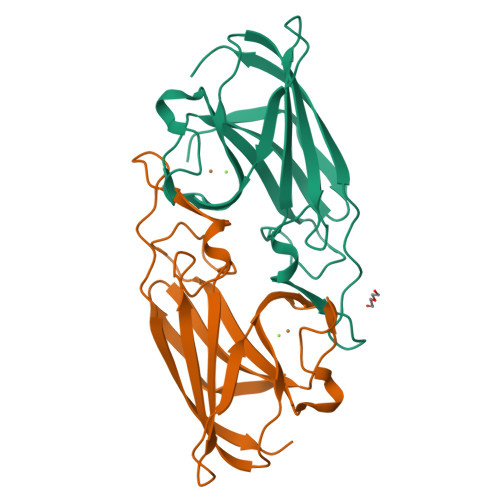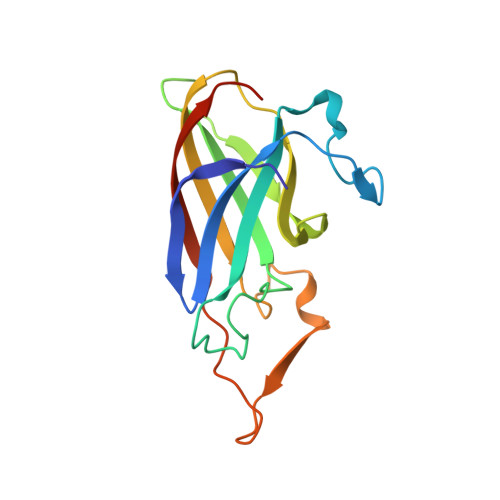New insights into the mechanism of iron transport through the bacterial Ftr system present in pathogens.
Steunou, A.S., Vigouroux, A., Aumont-Nicaise, M., Plancqueel, S., Boussac, A., Ouchane, S., Morera, S.(2022) FEBS J 289: 6286-6307
- PubMed: 35527501
- DOI: https://doi.org/10.1111/febs.16476
- Primary Citation of Related Structures:
7R3P, 7R3S, 7R4U, 7R4V, 7R4Z, 7R5E, 7R5G, 7R5P - PubMed Abstract:
Iron is an essential nutrient in bacteria. Its ferrous form, mostly present in low oxygen and acidic pH environments, can be imported using the specific Ftr-type transport system, which encompasses the conserved FtrABCD system found in pathogenic bacteria such as Bordetella, Brucella and Burkholderia. The nonpathogenicity and versatile metabolism of Rubrivivax gelatinosus make it an ideal model to study the FtrABCD system. Here, we report a new aspect of its regulation and the role of the periplasmic proteins FtrA and FtrB using in vivo and in vitro approaches. We investigated the metal binding mode and redox state of copper and iron to FtrA by crystallography and biophysical methods. An 'as isolated' FtrA protein from the bacterial periplasm contained a copper ion (Cu + ) identified by electron paramagnetic resonance (EPR). Copper is coordinated by four conserved side chains (His and Met) in the primary metal site. Structural analysis of R. gelatinosus FtrA and FtrA homologues revealed that copper binding induces a rearrangement of the His95 imidazole ring, releasing thereafter space, as well as both Asp45 and Asp92 side chains, for iron binding in the secondary metal site. EPR highlighted that FtrA can oxidize the bound ferrous ion into the ferric form by reducing the bound Cu 2+ into Cu + , both metal sites being separated by 7 Å. Finally, we showed that FtrB binds iron and not copper. These results provide new insights into the mechanism of ferrous iron utilization by the conserved FtrABCD iron transporter for which we propose a new functional model.
Organizational Affiliation:
Université Paris-Saclay, CEA, CNRS, Institute for Integrative Biology of the Cell (I2BC), Gif-sur-Yvette, France.



















